When we first heard from Richard Nissen, in June 2017, he shared one of the boats he had built and added to his small fleet at his home west of London on the River Thames. It was a s’ciopon, a Venetian boat rowed standing up and facing forward. With his newest boat, he’s still facing forward, but he’s taken a seat. It’s a skin-on-frame kayak, built to the plans and instructions in George Putz’s 1990 book, Wood and Canvas Kayak Building. Putz took his inspiration from a how-to article by about the Walrus kayak by Norman Skene in the June 1923 issue of the now defunct magazine, The Rudder. And Skene took his inspiration from a Southwest Greenland kayak he measured in 1921 in the Peabody Museum in Salem, Massachusetts. Howard Chapelle drew the lines for that kayak and included it in his chapter of Bark Canoes and Skin Boats of North America.
 Richard Nissen
Richard NissenThe frame’s many elements are screwed and glued together. When it was finished, Richard had to decide what to skin it with.
The kayak has undergone quite a few changes from its origin as a sealskin-covered driftwood frame to Skene’s adaptation. To simplify construction for readers of The Rudder, Skene did away with steam-bent frames and lashings and switched to a frame made of sawn pieces, glued and screwed together. He felt at liberty to assume that his readers had tools and woodworking experience; his article occupied two-and-a-half pages of the magazine. Putz, publishing in 1990, took 124 pages to coach readers through the build.
For lumber, Richard had some old planks on hand, nearly free of knots, but not long enough to make the longitudinals in one piece, so he had to cut and glue a lot of scarf joints to make the keel, stringers, chines, and gunwales. He repurposed a discarded Windsor chair back for the deck beam at the aft end of the cockpit—a more comfortable piece to lean against—and cut the curved stems from a similarly curved driftwood branch he found in the river.
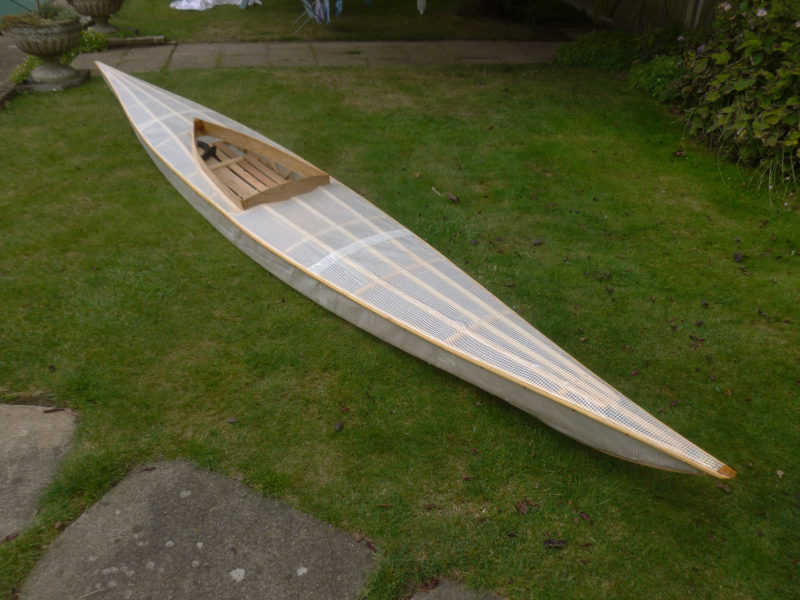 Richard Nissen
Richard NissenThe heavy-duty, fiber reinforced polyethylene tarp made a lovely skin, allowing the intricate frame to show through.
The construction of the frame was straightforward and didn’t bog Richard down, but deciding what material to use for the fabric covering did. He was set on keeping the expenses to a minimum and steered away from canvas, even if it were easy to come by. Back in 1990, Putz himself acknowledged that a suitable piece of 10-oz canvas would be pricey—about $130. Richard settled on a fiber-reinforced polyethylene tarp as the source of his covering material. “It looks magnificent,” he notes, but admits in hindsight “that this choice was a bad one as it is not as strong as it should be.” It stretched over the frame easily enough and with bright-finished sheer guards covering the material’s edges and the staples anchoring them, the semi-transparent skin looks quite hi-tech.
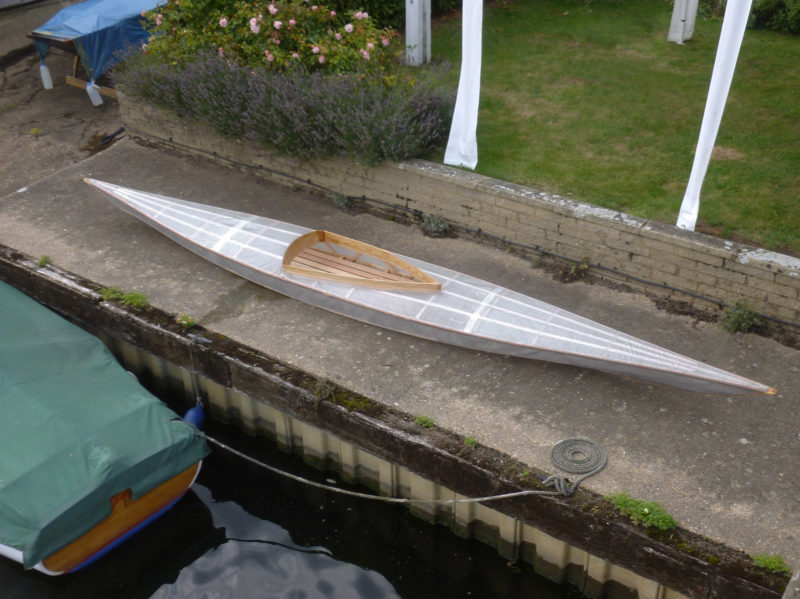 Richard Nissen
Richard NissenAt the Thames riverside, the kayak, ready to launch, rests in the company of two of Richard’s other boats.
The keel strip, which is to guard the skin from wear, was itself the cause of damaging it. When the kayak went out for its first trials, where each screw holding the guard passed through the skin there was a pathway for water to get aboard. “This made the first paddle extremely exciting as the kayak effectively leaked like a sieve. So, it was a dash for home not to sink completely.” The solution was clear silicone caulking, dabbed over each screw head and run along the junction of the skin and the keel guard.
Richard and his son report that, leaks nearly eliminated, the kayak performs well and “is a joy to use, so the design works.” Setting the kayak over strips of toilet paper helps locate leaks that have yet to be fixed, and chasing leaks remains an ongoing project. Richard isn’t willing to replace the skin. “It may be easier to start again from scratch to resolve the difficulties with a new solution for the skin. The frame is a very beautiful object in its own right and perhaps it will end up on display stripped of its skin.”
 Juliet Nissen
Juliet NissenRichard has the perfect place for “messing about in boats.” His stretch of the Thames winds through the countryside that Kenneth Grahame used as the setting for “Wind in the Willows.”
For now, he hopes to get all of the leaks stopped and enjoy paddling the Thames. “There are no rocks or other things in the river to rip or destroy the boat—the Thames is very sheltered and gentle environment.” Kenneth Grahame, author of Wind in the Willows,” lived very close to where Richard has his houseboat, so he paddles were Ratty and Mole enjoyed picnic outings and messing about in boats. He has yet to cross paths with them.![]()
Do you have a boat with an interesting story? Please email us. We’d like to hear about it and share it with other Small Boats Magazine readers.
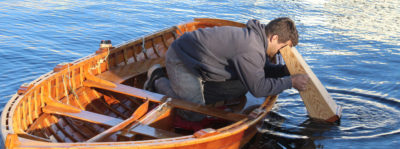


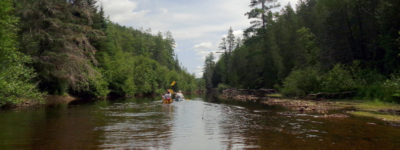
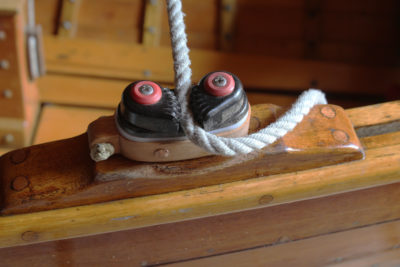
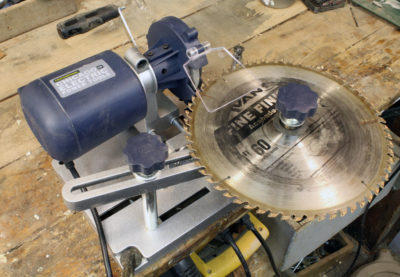
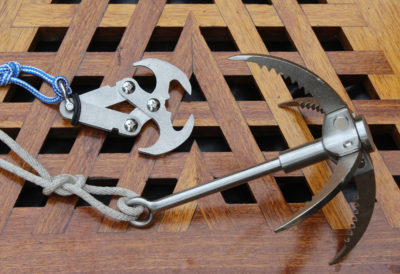

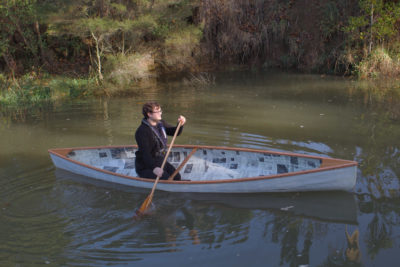
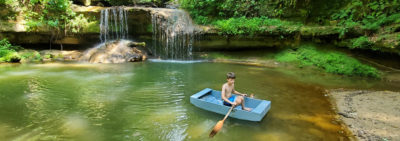
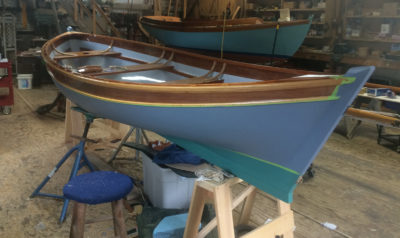
George Dyson, in Bellingham, Washington, uses a heavy-duty nylon fabric to skin his baidarkas. This is pricier and heavier than your poly, but very tough. His father is Freeman Dyson, the eminent astrophysicist. You can google George to get his contact information. His book Baidarka is a impressive tome, with much historical background on the baidarka, and beautiful photos of his kayaks, both finished and under construction.
At one time he lived in a treehouse high in a Douglas fir, near Deep Cove east of Vancouver, British Columbia.
Alas, George’s tree house is no more, and there are notions for development of the area – a parking lot, I believe…
I would also like to recommend George Dyson as a source to get fabric coverings from. He sells quite a few different weights and types, and it’s extremely strong and, when painted with regular oil-based enamel, quite waterproof. I believe is the name of his business is Dyson Baidarka and Co. He has a half-built website, but most of his business is conducted over the phone or through email.
About twenty years ago, George Dyson’s book inspired me to build a baidarka to the design in the back of the book. However, instead of aluminum tubing for the frame, I made it out of wood and further, I converted it to be able to take it apart for easier transport. I did buy the heavy-duty nylon from George for the skin and used Hypalon rubber deck paint to seal it. Its first major trip was by air to Haida Gwaii where I lashed it together and paddled in the archipelago for nearly a month.
For what it’s worth, I’ve considered using vinyl-coated polyester billboard tarp material as an economical SOF kayak-covering material, but have only used for boat covers so far. The white-both-sides roll I bought a few years ago was under 20 cents per square foot. Can’t recall the vendor, but a quick search comes up with these sources, which may have similar material in various weights and thicknesses:
Billboard Tarps
…and if you want to reuse materials and don’t mind advertising on one side with the other side black:
Repurposed Materials
There may be other sources.
When I read Richard’s fix, it seemed a little hit-and-miss and this has proven to be the case. While I can only guess at the details of his keel protection strip, I suggest that the answer would be to remove the screws one at a time, injecting sealant into the hole, and replacing the screw. There may be better ways, but this seems like the quickest.